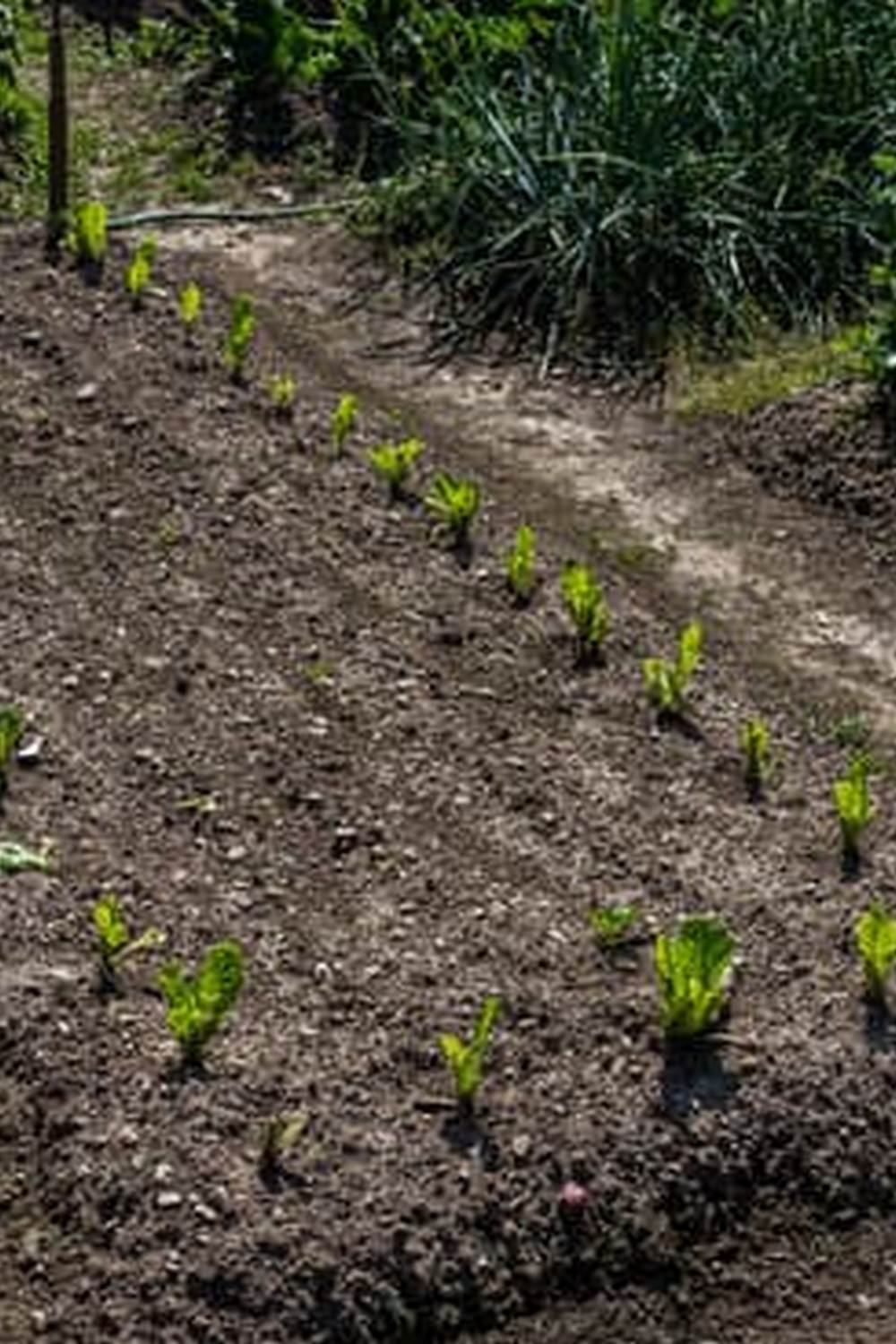Are you interested in starting your own vegetable garden but not sure where to begin? The vegetable gardener’s bible is here to help guide you through the process of creating and maintaining a successful garden. From selecting the right location to harvesting your home-grown produce, this comprehensive guide will provide you with the knowledge and tips you need to become a successful vegetable gardener.
One of the most significant benefits of vegetable gardening is the opportunity to enjoy fresh, organic produce right from your own backyard. Not only does it provide a sustainable and cost-effective way to incorporate healthy vegetables into your diet, but it also allows you to connect with nature and experience the joy of growing your own food. Whether you are an experienced gardener or a beginner, there is something incredibly rewarding about tending to a thriving vegetable garden.
In this section of the article, we will explore the numerous advantages of vegetable gardening and how it can positively impact your physical health, mental well-being, and overall lifestyle. Additionally, we will discuss the environmental benefits of growing your own produce and the satisfaction that comes with reducing your carbon footprint. So let’s dig in and uncover all the incredible benefits that come with being a vegetable gardener.
Getting Started
When it comes to starting your vegetable garden, one of the most important steps is selecting the right location. The success of your garden depends heavily on where you choose to plant your vegetables. Ideally, you want a spot that receives at least 6-8 hours of sunlight per day, has good drainage, and is located close to a water source.
If you have limited space in your yard, consider planting your vegetables in containers or raised beds. This is a great option for those with small yards or even for apartment dwellers who want to try their hand at gardening. Container gardening allows for more flexibility in terms of finding the right location, as you can move the containers around to follow the sun if needed.
Another important consideration when selecting a location for your vegetable garden is proximity to your home. You will be more likely to tend to and enjoy your garden if it’s located close to your house. Additionally, having easy access to your garden makes it easier to water and harvest your vegetables regularly.
Proper planning from the beginning will set you up for success as a vegetable gardener. By choosing the right location for your garden, whether it’s in the ground, in containers, or in raised beds, you can ensure that your plants receive adequate sunlight and water while being easily accessible for regular maintenance and harvesting.
| Aspect | Details |
|---|---|
| Minimum sunlight required | 6-8 hours per day |
| Drainage | Good drainage required |
| Proximity to water source | Close proximity recommended |
Preparing the Soil
When it comes to vegetable gardening, one of the most important steps is preparing the soil. Nutrient-rich soil is crucial for the healthy growth of your vegetables and a successful harvest. Here are some tips for creating the perfect soil environment for your garden:
- Conduct a Soil Test: Before you start preparing your soil, it’s essential to know its current condition. A soil test can determine the pH levels, nutrient content, and any deficiencies that need to be addressed. You can purchase DIY soil test kits or send samples to a local extension office for analysis.
- Adding Organic Matter: Incorporating organic matter such as compost, manure, or shredded leaves into the soil can improve its structure and fertility. Organic matter also helps with water retention and drainage, promoting a healthy root system for your vegetables.
- Avoiding Compaction: Compacted soil can hinder root growth and reduce oxygen levels within the soil. To prevent compaction, avoid walking on the garden beds and use raised beds if necessary to provide better drainage and aeration for your plants.
By following these tips, you can create nutrient-rich soil that will provide an ideal growing environment for your vegetables. Taking the time to prepare your soil properly will set the foundation for a bountiful and successful vegetable garden. So grab your gardening tools and get ready to give your plants the best possible start in life.
Choosing the Right Vegetables
When it comes to selecting vegetables for your garden, it’s important to consider factors such as climate, soil type, and available space. Here are some guidelines to help you choose the best vegetables for your vegetable garden:
1. Consider your local climate: Certain vegetables thrive in specific climates, so it’s important to choose varieties that are well-suited to your local weather conditions. For example, if you live in a region with hot summers, heat-tolerant vegetables like tomatoes, peppers, and eggplant are good choices. On the other hand, if you have a shorter growing season, look for quick-maturing vegetables like radishes, lettuce, and spinach.
2. Assess your soil type: Different vegetables have different soil requirements, so it’s essential to understand the composition of your soil before choosing what to plant. For instance, root vegetables like carrots and beets prefer well-draining sandy soil, while leafy greens like kale and Swiss chard thrive in fertile, loamy soil.
3. Determine available space: The amount of space you have will also dictate which vegetables you can grow. If you have limited space, consider compact varieties or those that can be grown vertically, such as cucumbers and pole beans.
By carefully considering these factors and researching the specific needs of each vegetable variety, you can ensure a successful and bountiful harvest from your vegetable garden.
Planting and Maintenance
Choosing the Right Time to Plant
The timing of planting your vegetable garden can greatly affect its success. Some vegetables thrive in cooler weather, while others need warmer temperatures to grow. It’s important to research the specific needs of each vegetable and plant them at the appropriate time. Additionally, consider your local climate and growing zone to determine the best time for planting.
Preparing Your Garden Beds
Before planting your vegetables, it’s essential to prepare the garden beds properly. Clear the area of any weeds, rocks, or debris that may hinder the growth of your plants. Loosen the soil with a garden fork or tiller to ensure good drainage and root development. Adding compost or organic matter can also improve the soil quality and provide essential nutrients for your vegetables.
Caring for Your Vegetable Garden
Watering
Proper watering is crucial for the health of your vegetable garden. Most vegetables require consistent moisture, especially during dry periods and when they are establishing roots or developing fruits. However, overwatering can lead to root rot and other issues. It’s important to water deeply but less frequently, allowing the soil to dry out slightly between waterings. Using mulch can also help retain moisture and reduce evaporation.
Fertilizing
Fertilizing your vegetable garden is essential for providing necessary nutrients for plant growth. Consider using organic fertilizers or compost to avoid chemical buildup in the soil. Different vegetables have different nutrient needs, so it’s important to research and understand those needs before applying fertilizer. Over-fertilizing can harm plants, so it’s crucial to follow recommended application rates.
By following these step-by-step instructions for planting and caring for your vegetable garden, you can ensure a bountiful harvest of healthy, home-grown produce that will delight both you and your family throughout the growing season.
Dealing With Pests and Diseases
Identifying Common Pests and Diseases
One of the biggest challenges for any vegetable gardener is dealing with pests and diseases that can wreak havoc on your carefully cultivated plants. Common pests to watch out for include aphids, caterpillars, and flea beetles, while diseases such as powdery mildew and blight can also pose a threat to your vegetable garden. It’s important to be able to identify these pests and diseases early on so that you can take proactive measures to protect your plants.
Organic Pest Control Methods
For the environmentally conscious vegetable gardener, there are plenty of organic pest control methods that can be used to protect your plants. One popular method is companion planting, where certain plants are grown together to repel pests or attract beneficial insects. Additionally, using natural predators such as ladybugs or praying mantises can help keep pest populations in check. Other options include homemade insecticidal soaps and neem oil sprays, which can effectively control common garden pests without harming beneficial insects.
Preventative Measures for Disease Control
In addition to controlling pests, preventing diseases from taking hold in your vegetable garden is crucial for ensuring a successful harvest. Start by selecting disease-resistant varieties of vegetables when planning your garden, as this can greatly reduce the risk of disease outbreaks.
Proper spacing between plants, good air circulation, and avoiding overhead watering can also help prevent the spread of diseases such as blight and powdery mildew. If despite your best efforts a disease does appear in your garden, promptly removing infected plants and improving overall sanitation can help stop the spread to healthy plants.
By being proactive about pest and disease management in your vegetable garden, you can ensure a bountiful harvest while minimizing the need for harmful chemical interventions. With careful observation and timely intervention, you’ll be able to protect your vegetables and enjoy a successful gardening season.
Harvesting
After weeks of hard work and dedication, it’s finally time to reap the rewards of your vegetable gardening efforts. The process of harvesting your home-grown produce is not only satisfying but also crucial in ensuring that you get the best taste and nutritional value from your vegetables. Here are some tips to help you make the most of your harvest.
First, it’s important to know when your vegetables are ready for harvesting. Different vegetables have different indicators that they are ready to be picked, such as size, color, and texture. For example, tomatoes should be firm and fully colored, while carrots should have a bright orange color and be around 1 inch in diameter. Understanding these signs will help you harvest your vegetables at the peak of ripeness.
Once you’ve determined that your vegetables are ready for harvesting, it’s essential to handle them with care. Use a sharp knife or shears to gently cut or snip the vegetables from the plant to avoid damaging the rest of the plant. Be sure to handle delicate fruits like strawberries and raspberries with extra care to prevent bruising.
After harvesting, promptly store your produce in a cool place away from direct sunlight to maintain freshness and flavor. Following these tips will ensure that you enjoy the full benefits of your home-grown harvest.
As a vegetable gardener, witnessing the transformation from seed to harvest is truly fulfilling. By following these tips for harvesting and storing your home-grown produce, you can savor the delicious flavors and nutritional benefits of freshly harvested vegetables all season long. Happy harvesting.
Conclusion
In conclusion, the vegetable gardener’s bi can be an incredibly fulfilling and rewarding experience. Not only does it provide a sense of accomplishment and pride in growing your own food, but it also offers numerous health benefits through access to fresh, organic produce. By following the tips and guidelines provided in this article, you can create a thriving vegetable garden that brings joy and satisfaction.
Being a vegetable gardener allows you to connect with nature, cultivate patience and determination, and enjoy the simple pleasure of nurturing plants from seed to harvest. There is something truly special about sowing seeds, caring for seedlings, watching them grow into mature plants, and finally harvesting the fruits (or vegetables) of your labor. The process fosters a deeper appreciation for the natural world and the food we eat, while also offering a source of relaxation and stress relief.
Ultimately, becoming a vegetable gardener is not just about reaping a bountiful harvest – it’s about embracing a lifestyle that promotes sustainable living, self-sufficiency, and connection to the earth. Whether you have a small patio garden or an extensive backyard plot, the act of tending to your vegetable garden can be deeply enriching on both a personal and environmental level.
So go ahead – roll up your sleeves, get your hands dirty, and experience the joys of being a vegetable gardener.

If you’re looking to get into vegetable gardening, or are just looking for some tips on how to make your current garden better, then you’ve come to the right place! My name is Ethel and I have been gardening for years. In this blog, I’m going to share with you some of my best tips on how to create a successful vegetable garden.





